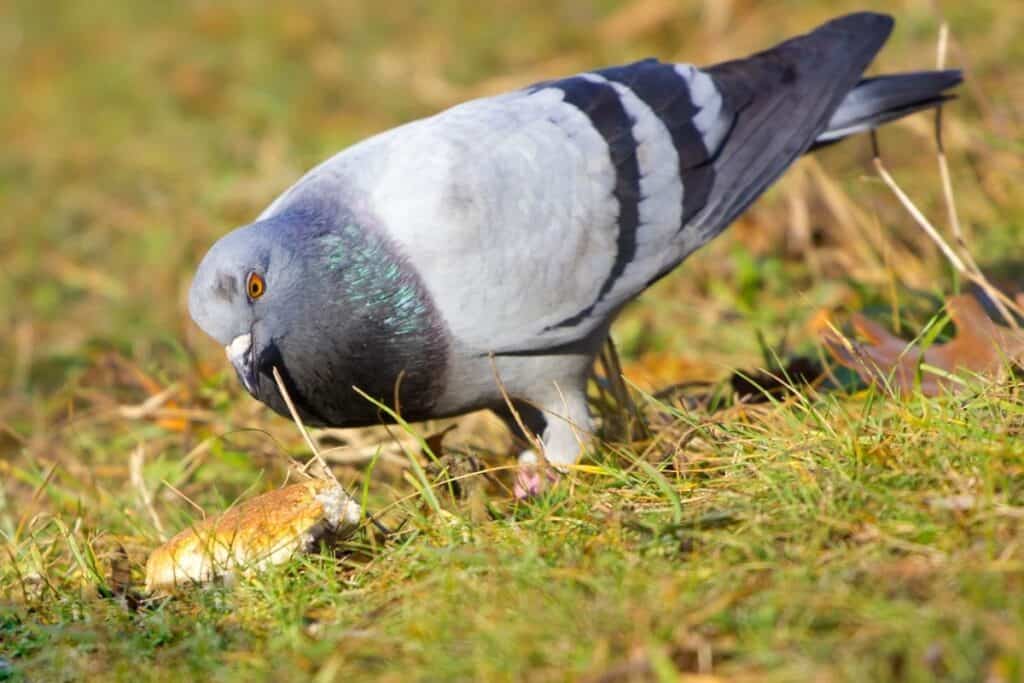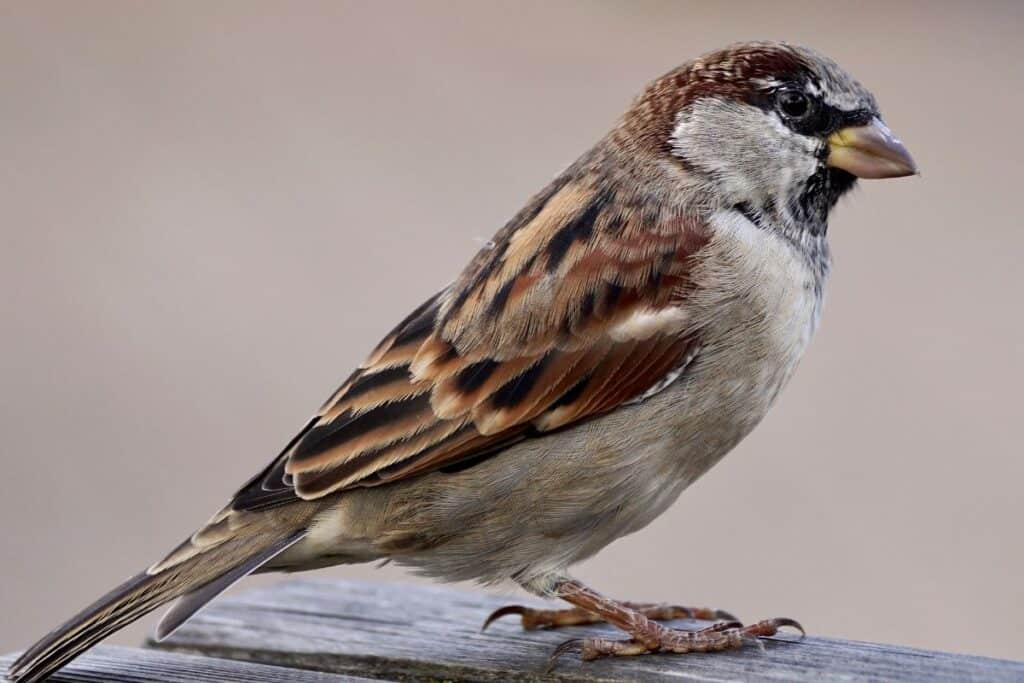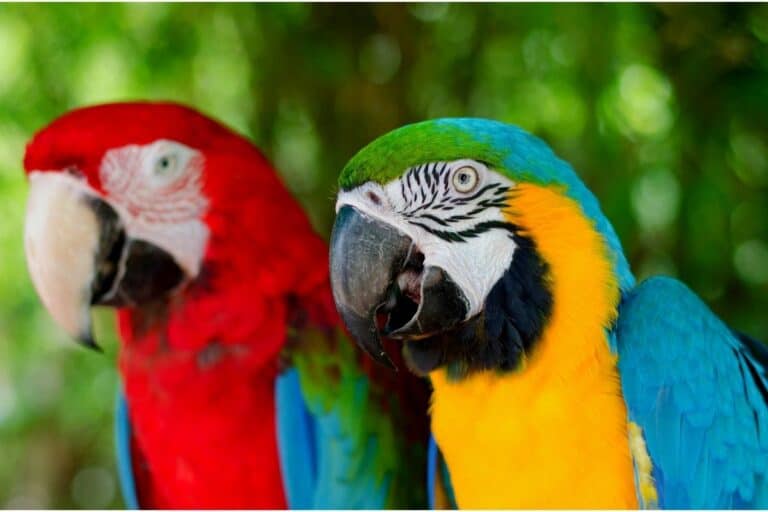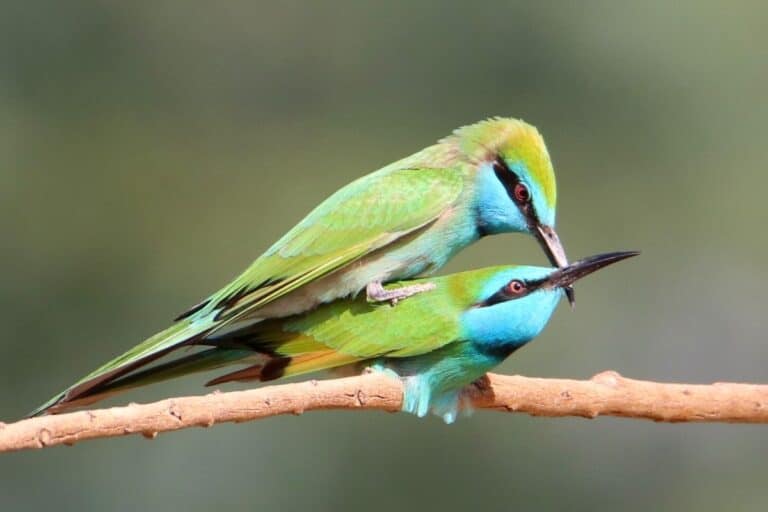Why Do Birds Walk When They Can Fly? [ANSWERED! + FAQs]
We’re reader-supported; we may earn a commission from links in this article.
Birds have wings that enable them to fly and yet some pigeons just love to walk instead of flying most of the time! Why does this happen? I was highly curious about it too! So I did some research and found an answer. Here’s what I found:
Birds walk when they can fly because it consumes much less energy to do so. As it is more energetically-costly to fly, ground-feeding birds like pigeons and starlings choose to walk while foraging instead of flying around because their food sources are found mostly on the ground.
Now you know that birds walk because it literally is less tiring for them, keeping on reading as I give you a full answer as to why birds choose walking instead of flying! Read on for more!
Why Do Birds Walk When They Can Fly? (Continued Full Answer!)

Chances are, you probably have seen how some certain birds like pigeons walk all over the place to look for food and hang out. Like this:
Why on earth would they walk away compared to other birds that fly away immediately?
Why would birds risk getting caught by a predator when they could fly away quickly instead to save their own skin?
I will cover the answers in detail here!
Birds often choose to walk instead of flying because it consumes much less energy to walk than to fly. As it is energetically-costly to fly, ground-feeding birds like pigeons and starlings choose to walk while foraging instead because their food sources are mostly on the ground.
According to experts that have analyzed the decision-making process of how Starlings choose between walking and flying while they are foraging (looking for food), they make the decision based on whichever will allow for them to gain the most amount of energy over time. [1]
Think of it this way: Walking uses less energy and flying uses much more.
However, when birds are foraging they will pick the one that will allow them to gain the most energy.
This means that if a bird can easily access a food source by simply walking over, they would do that instead of flying!
It’s probably only when birds see someone feeding lots of bread in the distance, then they will take the effort to fly over because that will give them more energy in the long run!
Check out these European starlings walking to get some bread:
In my personal opinion, I like to compare it to us, humans! We would much rather walk over to a location that’s near rather than run there.
We only really run when we need to, like to catch a train or something. We run only when it’s worth it because it consumes a lot of energy. The same thing applies to birds!
Is It Easier For Birds To Fly Or Walk?

It is easier for birds to walk than fly. This is because it takes less energy to walk than to fly. However, the ease of flying or walking depends on the type of flight, the bird species, and the distance to be traveled. For example, soaring eagles require much less energy to soar than to walk long distances.
The answer to the question can really vary depending on many factors. Here they are:
1. Type of Flight
Different birds fly with different flight patterns. If you want to learn more about different flight patterns, check out an article I wrote about it here. Look at point number 6!
Soaring flight can actually be more energy-energy efficient than other types of flight patterns.
2. Bird Species
Bird species that forage near the ground like pigeons, starlings, and mynahs, may find it easy to walk than to fly because they have no business flying so much and so high like falcons, and hawks that hunt other birds.
They would find it easier to peck at food at the ground while walking, anyway!
3. Distance To Be Travelled
Regarding the distance to be traveled, for birds that migrate, it would make more sense for them to fly than walk right? I can’t imagine a bird walking all the way across the globe!
If a bird can walk within a few feet of some bread crumbs, why would they also spend more energy to fly there! This applies to birds that walk a lot like pigeons!
There’s also a term called “Flight Initiation Distance” (FID for short) where birds only begin to fly when a threat enters the FID radius around them.
This means that birds will always switch to flight mode when a threat is too near. You can read an article I wrote about whether birds are scared of humans here. You’re gonna love it!
Why Do Birds Walk?

Birds walk because it consumes much less energy than flying, especially if they are foraging from food sources on the ground. Birds like pigeons, starlings, mynas, sparrows, and seagulls have been seen walking to look for food or just to travel short distances within a few feet.
Of course, this is not taking into consideration the flightless birds which can’t even fly, so they have to walk!
How Fast Do Birds Walk?

Birds can walk as fast as 0.06 - 2.3 m/s. This bird walking speed was recorded by scientists on a treadmill. Northern lapwings were recorded with the slowest walking pace of 0.06 m/s and Oystercatchers, the fastest, at 2.3m/s. Pigeons were recorded with the most normal walking speed at 0.07 - 0.81 m/s. [2]
Which Birds Hop or Walk?

Birds that hop are mostly passerine birds such as sparrows, finches, jays, chickadees, and wrens. Common birds that walk include pigeons, aquatic birds, and quails. However, some birds both hop and walk such as robins, ravens, and blackbirds.
Here’s a table I compiled of the birds that hop, walk, and those that do both!
| Birds | Movement |
| Sparrows | Hop |
| Finches | Hop |
| Jays | Hop |
| Chickadees | Hop |
| Wrens | Hop |
| Pigeons | Walk |
| Aquatic birds | Walk |
| Quails | Walk |
| Robins | Hop and walk |
| Ravens | Hop and walk |
| Blackbirds | Hop and walk |
Final Thoughts
There are many ways in which a bird can choose to move. And this includes walking, running and flying. Birds pick the one that is most suitable for their purpose!
Birds like pigeons choose to walk in most cases because it requires much less energy than flying! I hope you have learned something new today.
Thanks for reading and happy birding!
References
- To walk or to fly? How birds choose among foraging modesLuis M. Bautista, Joost Tinbergen, Alejandro KacelnikProceedings of the National Academy of Sciences Jan 2001, 98 (3) 1089-1094; DOI: 10.1073/pnas.98.3.1089
- Andrada, E., Haase, D., Sutedja, Y. et al. Mixed gaits in small avian terrestrial locomotion. Sci Rep 5, 13636 (2015). https://doi.org/10.1038/srep13636
My Recommended Birding Resources:
Hey there, Justin here!
Here’s a list of all my favorite resources, products, and brands I trust and love.
My Celestron Nature DX 8×42 Binoculars: It’s a great budget pair for beginner birders. Highly valued for its price! Read my review.
Safe Paint for Bird Baths Guide: Learn about non-toxic paint for painting bird baths.
Safe Sealers for Bird Baths Guide: Learn which sealers are safe for bird baths.
Safe Paint for Bird Feeders Guide: Learn what special care needs to be taken to paint bird feeders with the right paint.
Safe Paint for Birdhouses Guide: Learn about non-toxic paint for painting birdhouses. (Not the same as bird baths!)
Bird Identification Apps Guide: 2 of my favorite birding apps are Merlin Bird ID, and eBird Mobile! Merlin is great for tracking and identifying birds, and eBird Mobile is great for tracking the birds sighted when birding.
Check out my resources page for the full list of resources I recommend!

Justin Chia
Justin is the founder and author of Birding Outdoors. He is a Nanyang Technological University (NTU) alumnus with a Bachelor of Biological Sciences and a former data analyst.
Now, Justin runs the Birding Outdoors blog full-time, hoping to share his deep love for birds, birding, and nature with others.
To unwind, Justin enjoys gaming and reading.


![Do Birds Get Struck By Lightning? [ANSWERED! + FAQs]](https://birdingoutdoors.com/wp-content/uploads/2021/02/adler-4099014_1920-768x353.jpg)


![Do Birds Prefer Flying Or Walking? [ANSWERED!]](https://birdingoutdoors.com/wp-content/uploads/2021/07/bird-walking-instead-of-flying-768x512.jpg)

![Do Birds Take Off Into The Wind? [ANSWERED!]](https://birdingoutdoors.com/wp-content/uploads/2020/09/osprey-adler-bird-of-prey-raptor-73825-768x587.jpeg)